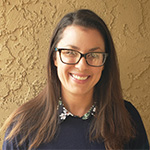No Records Found
Sorry, no records were found. Please adjust your search criteria and try again.
Google Map Not Loaded
Sorry, unable to load Google Maps API.
- Jacqueline
- Andrews
- No
- PO Box 1214
Solana Beach
California
92075
United States - Andrews Speech and Language

Solana Beach
California
92075
United States
My treatment approach for children with CAS includes employing the principles of motor learning in play-based activities to encourage repetitive spontaneous and imitative productions of the various targets. If appropriate, I use the Kaufman Speech Praxis hierarchy of syllable shapes to facilitate the production of early and complex sounds in various C-V combinations. To elicit the target sound or syllable shape, I may use tactile prompting, gestures, melodic speech, elongating/segmenting syllables, backward chaining, or visuals that accompany the verbal model provided. All prompts, therapy targets, and activities are individual to that specific client and their needs and preferences.
Parents are an integral part of therapy. I encourage parents to observe and participate in therapy tasks as much as possible. I discuss sound targets each session and coach methods/strategies on ways to elicit the specific consonant-vowel targets at home. I provide homework for families to practice at home in order to promote generalization of skills and am available to parents throughout the week to discuss questions and any difficulties they are having with implementing strategies at home.
Depending on the child's cognitive and linguistic abilities, I may recommend a high tech or low tech AAC device to support the child's functional communication abilities while verbal expression is still developing. In my career, I have used a high-tech AAC device (Proloquo2go on the Ipad) for a child with strong receptive language abilities relative to expressive language, and poor speech production skills secondary to CAS. We used the AAC device to support various pragmatic functions, which we targeted during both structured tasks in therapy (i.e., labeling, commenting, requesting) as well as during unstructured tasks (i.e., greetings, social commenting during snack time, requesting preferred toys on break). I more frequently use lower tech AAC (e.g., pictures, sign language) as they are more accessible and readily available to the families I serve. For a particularly young client with both CAS as well as ASD, we used a combination of functional signs to meet his basic needs (e.g., more, want, help, my turn, go, etc.) as well as picture icons on a communication board to support requesting during mealtimes. Sign language was used across both academic and play related therapy activities with picture icons used to support specific labeling of items as appropriate.




